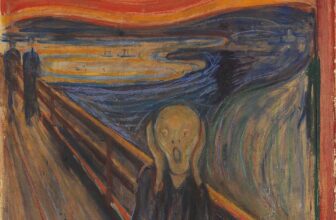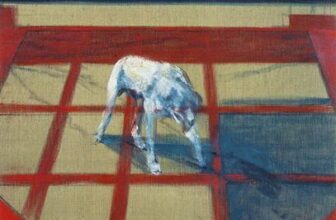
The Artist and His Muses
The Artist and His Muse: An Eternal Dance
Throughout history, the relationship between an artist and their muse has been one of the most enigmatic and celebrated themes in the world of art. The muse is more than just a source of inspiration; she (or he) becomes an integral part of the artistic process, influencing the emotions, themes, and even the stylistic evolution of the artist. Nowhere is this dynamic more evident than in the life and works of Pablo Picasso.
Picasso, one of the most revolutionary and prolific artists of the 20th century, was deeply influenced by the women in his life. His muses were not just passive subjects but powerful forces that shaped his artistic journey. Each woman represented a different phase in his art, from the melancholic blues of his early years to the distorted, emotional compositions of Cubism and beyond.
But what does the concept of the artist and his muse truly mean? How did Picasso embody and redefine this relationship? And where do we see the echoes of this bond in his works today?
The Meaning of the Artist and His Muse
The term “muse” originates from Greek mythology, where the nine muses were goddesses who presided over the arts and sciences. In artistic terms, a muse is typically a person who inspires the artist’s creativity, serving as a model, a confidante, or even an obsession. The relationship between the artist and the muse can be romantic, platonic, or deeply complex, often reflecting the psychological and emotional landscape of the artist.
For Picasso, his muses were his romantic partners, each leaving an indelible mark on his work. The artist-muse relationship, in his case, was intense, passionate, and sometimes turbulent. These women were not mere objects of his gaze; they were catalysts for transformation, pushing his artistic boundaries and influencing the way he perceived the world.
Picasso’s Muses: The Women Behind the Masterpieces
Picasso had numerous muses throughout his life, each representing a different period in his artistic evolution. Here are some of the most significant:
Fernande Olivier (1904–1912): The Rose Period and the Birth of Cubism
Fernande Olivier, a French artist and model, was Picasso’s first great love. During their relationship, he moved from the somber hues of the Blue Period to the warmer tones of the Rose Period. She is featured in many of his early works, exuding tenderness and nostalgia. However, their relationship was tumultuous, marked by jealousy and control.
Most notably, during their time together, Picasso laid the foundations of Cubism, a movement that would revolutionize modern art. His fascination with African art and geometric abstraction can be traced back to this period, influenced by his relationship with Fernande.
Eva Gouel (1912–1915): The Mysterious Muse
Eva Gouel, Picasso’s next muse, was a quieter and more enigmatic figure. She inspired some of his most intimate and cryptic works. Picasso referred to her as “Ma Jolie” (My Pretty), embedding this phrase into several Cubist paintings. Tragically, Eva passed away from tuberculosis, leaving Picasso devastated. Her death marked a somber period in his life, reflected in the subdued tones of his art during this time.
Olga Khokhlova (1917–1935): The Classical Revival
A Russian ballerina, Olga Khokhlova, brought a sense of order and elegance into Picasso’s life. After their marriage, his work took on a neoclassical style, featuring refined, almost sculptural figures. He painted her as a serene, aristocratic presence, capturing her grace and poise.
However, their relationship soured over time, and Picasso’s frustration with the constraints of marriage began to manifest in his art. He started to distort her image, portraying her in exaggerated, harsh forms, reflecting the growing tension between them.
Marie-Thérèse Walter (1927–1935): The Golden Muse
Marie-Thérèse Walter was a young, vibrant woman who rekindled Picasso’s passion. Their relationship was initially secret, as he was still married to Olga. She inspired some of his most sensual and fluid works, with curving lines and bright, luminous colors. Her presence brought about a period of renewed creativity, culminating in some of his most iconic portraits.
Dora Maar (1936–1944): The Weeping Woman
Dora Maar, a photographer and intellectual, was a woman of depth and intensity. She played a crucial role in Picasso’s most politically charged work, Guernica, documenting its creation through photographs.
Her image is immortalized in The Weeping Woman, a series of paintings depicting emotional agony and turmoil. Their relationship was intellectual and fiery, but also deeply troubled, with Picasso’s controlling nature taking a toll on her mental health.
Françoise Gilot (1943–1953): The Defiant Muse
Françoise Gilot was an artist in her own right, and unlike Picasso’s previous muses, she refused to be consumed by his dominance. Their relationship was marked by a vibrant exchange of ideas, and she inspired many of his later works. Eventually, she left Picasso—a rare move among his muses—choosing to carve out her own artistic path rather than remain under his shadow.
Jacqueline Roque (1954–1973): The Final Muse
Jacqueline Roque was Picasso’s last muse and second wife, featuring in more portraits than any other woman in his life. She was his companion in his final years, inspiring some of his most expressive late works. Her presence brought both comfort and isolation, as she fiercely controlled his social circle.
Picasso’s Artist and Muse Theory
Picasso viewed the artist-muse relationship as a dynamic force, one that could fuel both creation and destruction. He saw his muses as mirrors, reflecting his own psychological states and artistic needs. Each new muse signified a rebirth in his art, pushing him toward innovation.
However, his relationships with his muses were often problematic. He wielded immense power over them, both artistically and personally. Many suffered emotional distress due to his manipulative tendencies. Yet, in his view, the muse was an extension of the artist—a vessel through which his artistic vision could manifest.
He famously said, “Every time I change women, I change my painting.” This quote encapsulates how his personal relationships directly influenced his artistic evolution.
Where is Picasso’s Artist and His Muse Today?
The echoes of Picasso’s artist-muse relationships can still be seen in the art world today. His works, depicting these women, are housed in major museums and private collections worldwide. From the Musée Picasso in Paris to the Museo Picasso in Barcelona and Málaga, his legacy lives on through the portraits of his muses.
Moreover, the debate surrounding his treatment of these women continues to shape discussions about the ethics of the artist-muse relationship. Was Picasso a genius who channeled his emotions into art, or was he an emotional tyrant who exploited his muses? The answer likely lies somewhere in between.
The Eternal Muse
Picasso’s life and work exemplify the profound and often paradoxical nature of the artist-muse relationship. His muses were not just passive figures; they were integral to his evolution as an artist. Each woman contributed something unique, leaving an undeniable imprint on his creative legacy.
Today, the concept of the artist and his muse continues to inspire discussions in art, literature, and beyond. The muse is no longer just a silent observer, she is an active participant in the artistic process, shaping the very essence of creation itself. And in Picasso’s case, his muses remain immortal, their faces forever etched into the fabric of modern art.




